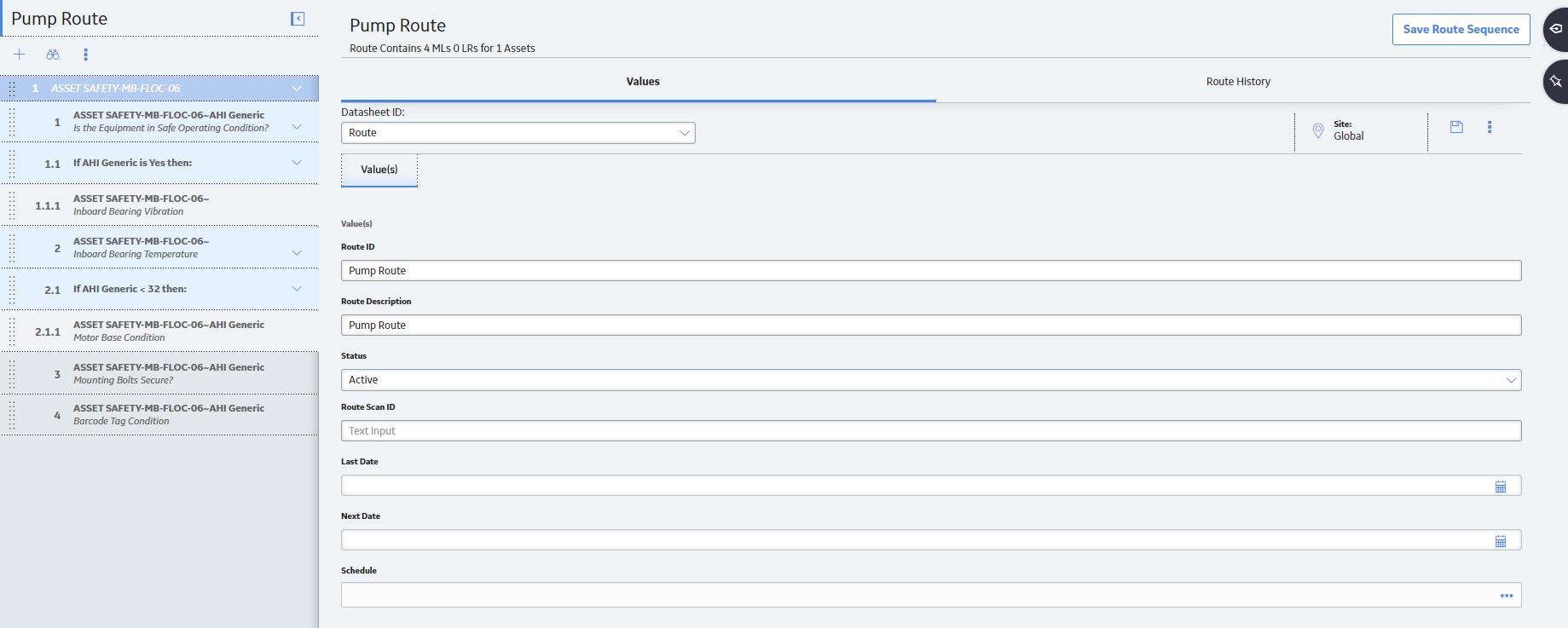The Checkpoint Condition worksheet defines the conditions under which the successor checkpoints for Checkpoint Conditions are displayed in Rounds Data Collection. This worksheet also works together with the Measurement Location worksheet to determine the Route sequence for Routes with Checkpoint Conditions.

As mentioned above, the values defined in the Condition Batch ID and the Condition Identifier are used in the Measurement Location worksheet to specify successor checkpoints for Checkpoint Conditions. Also, the values specified in the Parent ML Batch ID and the Parent ML ID fields must match the values defined in the ML Identifier and Checkpoint ID fields, respectively, for the predecessor checkpoint of a Checkpoint Condition.
No value is required in the Sequence field. However, if a value is entered in this field for Checkpoint Conditions with the same predecessor checkpoint (that is, sibling Checkpoint Conditions), the value you enter in this field determines the sequence of the sibling Checkpoint Conditions.
The values you enter in the Possible Condition and Field Value for Character/Numeric Type fields determine the conditions under which the successor checkpoints will appear in Rounds Data Collection. In this sample worksheet, the successor checkpoint of Condition-2 (that is, Checkpoint-14 as defined in the Measurement Location worksheet) will only appear when the reading value for the predecessor checkpoint (Checkpoint-13) is less than 32.
Note: When a predecessor checkpoint has a Type value of Character, the only valid value to enter in the Possible Condition field is is.



